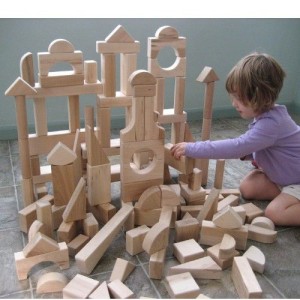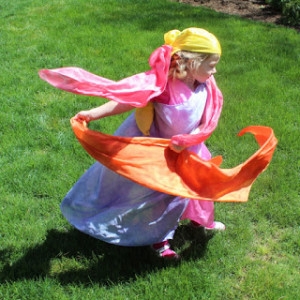 My family of 3 just did a totally awesome happy dance as we all celebrated baby’s first year of life. The fastest year ever.
My family of 3 just did a totally awesome happy dance as we all celebrated baby’s first year of life. The fastest year ever.
Each month, as he grew, our world was rocked. “Wow, he knows me! He’s babbling, that’s crazy! Banging blocks together? He’s a genius!” And let’s not even discuss those first steps… heart melted.
We live in a two bedroom apartment, and watching our baby grow in a small space, wasn’t nearly as bad as I thought. As a speech-language pathologist and play enthusiast, I wanted to create a nurturing and fun environment for baby to learn.
I’ve always preached that simple toys make smarter kids. The more a toy does, the less a child does. Kid operated, not battery operated. All the stuff that you may have heard before.
But now I’ve seen my own baby thrive in a very simple play area, and I know that any other child would do the same.
Why Simple Toys Make Smarter Kids:
1. Repetition
Repetition is the most basic form of learning and provides  practice to mastering a task. And when kids have mastered something, it makes the processing speed in their brains faster. The more you repeat patterns of thought in the brain, the easier it is to recall them later.
practice to mastering a task. And when kids have mastered something, it makes the processing speed in their brains faster. The more you repeat patterns of thought in the brain, the easier it is to recall them later.
“We are what we repeatedly do. Excellence, then, is not an act, but a habit.” ~Aristotle
Providing your child with just a few toys at a time will allow then to explore a multi-sensory approach to learning. Through repetition they will be able to connect each brain pathway for understanding and mastering sight, touch, sound, and movement, all at the same time. Pretty amazing results for just allowing a few simple toys around.
2. Attention and Concentration
“The first essential to the child’s development is concentration. It lays the whole basis for his character and social behavior. The child who concentrates, is immensely happy.” ~ Maria Montessori
A simple play environment, meaning only having a few toys in the child’s view at a time, can help to promote better attention and concentration with one task. Does your living room look like your child has taken over? I know the feeling. Gain back the control! Choose 5-8 toys and place them in one bin. Minimizing the toys will maximize your kiddo’s attention. Here’s how:
If the eyes can be diverted by more toys or colorful and noisy flashing things, then their brains are just distracted rather than really working through something. The longer a child can attend to a task, the better able they are to store the information in their memory. And as memory traces become stronger, learning occurs.
Better focus can also yield more perseverance (what a stellar quality in our nuggets). Studies show that having a parent present (truly just present, next to the child, watching and only encouraging their efforts) allow for a child to concentrate longer. They are more motivated to continue with one task, when an adult is sitting with them.
3. Cultivation of Creativity
Simple toys require the child to do all the work, to make something move, sound, and be interesting. Therefore, a child must operate the toy to its full potential, rather than the battery-type electronic, which of course, requires a form of work and creativity.
Simple toys offer more play opportunities and can provide more outlets for the imagination.
The best toys are the ones you already have… Tupperware and wooden spoons, cardboard boxes, paper towel rolls, couch cushions. Your kiddo can create kitchens, cars, castles, microphones and mountains and build a pretend world in your living room.
Creativity is also important in language development. Rather than being distracted with battery-operated toys, a child will engage more with an adult and create more conversation or make requests, allowing for more interaction.
Is simple better? I think so. iThings and such weren’t so popular when we were kids, and well… we’re all kind of perfect.
 You can find Erika Cardamone swooning over cheese in the city by the bay. When she’s not searching for umami in her local eateries, she’s building forts and having dance parties with her toddler and husband in their small city apartment. If you want to know what she’s thinking, she’ll tell you at her blog over at TheSpeechies.com
You can find Erika Cardamone swooning over cheese in the city by the bay. When she’s not searching for umami in her local eateries, she’s building forts and having dance parties with her toddler and husband in their small city apartment. If you want to know what she’s thinking, she’ll tell you at her blog over at TheSpeechies.com